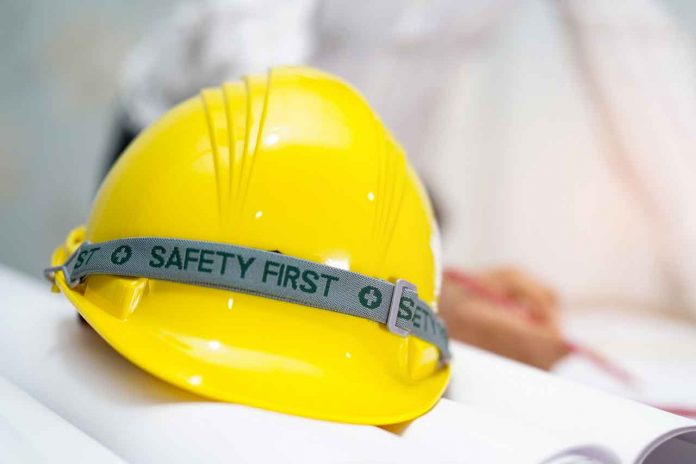The workplace is full of hazards and staying safe means understanding the risks around you. One of the biggest threats in many industries is exposure to harmful substances. COSHH (Control of Substances Hazardous to Health) helps businesses manage risks from hazardous substances, keeping workers safe.
But what about asbestos? This deadly material is a known health risk, causing diseases like asbestosis and mesothelioma. It’s hazardous, no doubt. So, does COSHH cover asbestos? This blog will help clear up the confusion.
What is COSHH?
Firstly, what exactly is COSHH? Short for Control of Substances Hazardous to Health, it’s a set of UK regulations designed to protect workers. The rules are pretty straightforward. They make sure employers assess, manage and reduce exposure to dangerous substances.
Think of it as a safety plan for chemicals, dust, fumes, and anything else that might harm you. It covers things like cleaning products, industrial chemicals, and even biological agents like bacteria.
Employers must identify hazards, control them and train workers to handle these risks appropriately. A COSHH course can help staff understand the dangers hazardous substances pose and control measures that can be implemented to reduce exposure risks. It gives workers and managers the knowledge to spot hazards and keep workplaces safe.
What is Asbestos?
Asbestos, a naturally extracted mineral, was once praised for its heat resistance and durability. It was used in everything from building materials to car parts.
Asbestos is dangerous when disturbed. It breaks into tiny fibres that float in the air. When inhaled, these fibres can settle in the lungs, causing serious diseases. The effects don’t show up right away. It can take years—even decades—for illnesses to appear.
So, why is asbestos still a problem? It’s simple: Many older buildings still contain it. Without proper management, anyone who disturbs asbestos could be at risk.
Does COSHH Include Asbestos?
Here’s where things get a little tricky. You’d think COSHH would cover asbestos because it’s a harmful substance. But it doesn’t—at least not directly.
Because asbestos is such a serious issue, it has its own set of rules. It is not included in the COSHH list of hazardous substances; instead, it is governed by the Control of Asbestos Regulations (CAR).
That doesn’t mean COSHH and CAR have nothing in common. Both aim to protect workers from health risks. But they handle things differently. COSHH is broader, covering a wide range of substances. CAR, on the other hand, is laser-focused on asbestos and how to manage it.
How is Asbestos Regulated?
The Control of Asbestos Regulations (CAR) lays out everything you need to know about handling asbestos. It’s detailed, strict and specific.
Under CAR, employers must:
- Identify asbestos in buildings or materials.
- Assess the risk of exposure.
- Create a plan to manage and reduce those risks.
- Train workers who might come into contact with asbestos.
A big part of CAR is the duty to manage asbestos. This duty applies to property owners, landlords and employers who manage buildings. They are responsible for ensuring that asbestos-containing materials are identified and kept in good condition.
Taking a duty to manage asbestos course is a great way to understand these responsibilities. It teaches you how to comply with the law and keep people safe. While CAR is focused on asbestos, it doesn’t mean you can ignore other hazardous substances. If asbestos work involves chemicals, dust, or fumes, COSHH might still apply.
Key Differences Between COSHH and CAR
Let’s break it down. Here’s how COSHH and CAR differ:
- Scope: COSHH covers a wide range of substances, while CAR is all about asbestos.
- Focus: COSHH focuses on general workplace risks. CAR zeroes in on identifying and managing asbestos risks.
- Training: COSHH courses teach you about many hazards, but CAR-specific training focuses solely on asbestos.
Why is Asbestos Treated Separately?
Asbestos is unique and its risks are well-documented and the consequences of exposure are severe. Unlike other substances, asbestos can cause deadly diseases even at low exposure levels.
Due to this, regulators decided that asbestos needed its own set of laws. They wanted to ensure that people handling asbestos followed strict guidelines. Managing asbestos requires a different approach than, say, dealing with cleaning chemicals or dust.
Another reason is history. Asbestos was widely used for decades before its risks were fully understood. Many older buildings still contain it, making it a long-term problem.
Staying Safe Around Asbestos
Knowing how to stay safe around asbestos is critical. Here’s what you can do:
- Don’t disturb it: Asbestos is most dangerous when damaged or disturbed. If you find it, leave it alone and call a professional.
- Know the rules: Make sure you understand CAR and how it applies to your workplace.
- Get trained: Education is key, whether it’s a Duty to Manage Asbestos Course or asbestos awareness training.
- Check your building: If you own a building, have it surveyed for asbestos. If asbestos is found, create a management plan.
Conclusion
While COSHH is excellent for managing a wide range of hazardous substances, asbestos is regulated separately under the Control of Asbestos Regulations.
Both sets of rules are designed to keep workers safe, but they approach risks differently. COSHH is broad and general. CAR is focused and detailed, dealing specifically with asbestos.
If you manage asbestos, follow the proper rules. Stay informed, get trained and always prioritise safety. After all, these regulations are about protecting people.







